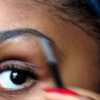
 By
Beauty Adams
By
Beauty Adams
Snail mucin, also known as snail slime, is a sticky substance that snails secrete when they crawl. It may sound gross, but this slime has been used for centuries as a natural remedy for various skin conditions. Today, snail mucin is a popular ingredient in many Korean beauty products, as well as some Western brands. But what exactly is snail mucin, and what are its benefits for your skin? In this blog post, we will answer some of the most trending questions about snail mucin, and give you some tips on how to use it in your skin care routine.
Snail mucin is the mucus that snails produce for different purposes, such as hydration, lubrication, adhesion, and protection. Snails can secrete different types of mucin depending on their needs. For example, the mucin from a snail’s foot helps it glide smoothly and stick to surfaces, while the mucin from its back is more hydrating and antimicrobial, which helps prevent infections and heal wounds.
Snail mucin contains various substances that are beneficial for the skin, such as:
Snail mucin is generally considered safe for pregnancy, as it is a natural substance that does not contain any harmful chemicals or hormones. However, some people may have allergies or sensitivities to snail mucin, or to other ingredients in the products that contain it. Therefore, it is always advisable to do a patch test before using any new product, especially if you are pregnant. To do a patch test, apply a small amount of the product on the inside of your elbow or behind your ear, and wait for 24 hours. If you experience any signs of irritation, such as itching, burning, or rash, do not use the product. If you are unsure about the safety of any product, consult your doctor before using it.
Retinol is a derivative of vitamin A that is widely used for anti-aging and acne treatment. Retinol works by increasing the turnover of skin cells, and stimulating the production of collagen and elastin. However, retinol can also cause dryness, irritation, and sensitivity, especially if used in high concentrations or too frequently.
Snail mucin can help counteract some of the side effects of retinol, by providing hydration, soothing, and healing to the skin. Snail mucin can also enhance the effectiveness of retinol, by creating a protective barrier that prevents water loss and allows retinol to penetrate deeper into the skin.
The best way to use retinol and snail mucin together is to apply them in the following order:
Snail mucin can be used both in the morning and at night, as it is suitable for all skin types and conditions. Snail mucin can help hydrate, brighten, smooth, and repair your skin, regardless of the time of day. However, some people may prefer to use snail mucin more often at night, as this is when the skin undergoes its natural repair and renewal process. Snail mucin can help boost this process, and make your skin look more refreshed and rejuvenated in the morning.
Snail mucin can be applied after cleansing and toning, and before moisturizing. You can also use snail mucin in combination with other serums or treatments, such as vitamin C, niacinamide, or retinol, as mentioned above. Snail mucin can enhance the effects of these ingredients, and also reduce their potential irritation.
Snail mucin is collected in different ways, depending on the source and the method of the manufacturer. Some of the most common ways are:
When buying snail mucin products, it is important to check the label and the website of the manufacturer, and look for information about how they source and collect their snail mucin. Some manufacturers may have certifications or seals that indicate their ethical and sustainable practices, such as cruelty-free, organic, or eco-friendly. You can also look for reviews and testimonials from other customers, or contact the manufacturer directly if you have any questions or concerns.





Never miss an important update. Be the first to receive our exclusive beauty tips straight into your inbox.